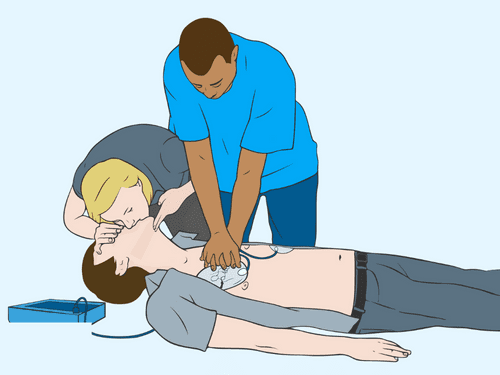
How to Perform CPR
CPR is an emergency response technique that is used to help keep blood circulating in a person who has suffered cardiac arrest. CPR can increase chances of survival for cardiac arrest victims 2 to 3 times. If you find yourself near someone having a cardiac emergency call 911 immediately. If they are unresponsive, not breathing, and do not have a pulse perform CPR while you wait for emergency personnel to arrive. If you’re unsure of what to do, then listen to the emergency dispatcher for directions.
Next, position the person on their back. Tilt their head and listen for breathing. Watch to see if their chest is rising and falling. Check for a pulse on their neck. If no breathing or pulse is detected then begin CPR. Note that the main purpose of CPR is to keep the blood moving so that it continues to reach the brain and other vital organs.
Continue by placing one hand over the other and press firmly in the middle of the chest.
Begin two compressions per second, or 100 to 120 per minute, and press down at least two inches in depth with the heel of your hand. People with CPR training can pause every 15 or 20 seconds to give two rescues breaths by pinching the nose and blowing into the other persons mouth until their chest rises and falls.
For untrained individuals, hands only CPR can also be performed. This is done at the direction of 911 dispatch. Continue the CPR until the person responds or until emergency responders arrive.
To perform CPR on infants use two fingers. Use both thumbs if another trained person is available to give rescue breaths. Begin two compressions per second, or 100-120 per minute. Compressions should be a bit shallower than what is used for adults, but the rate of compression is the same.
CPR saves lives, and can be a critical tool for providing emergency care where ever it is needed.
Anyone can become certified by means of classes offered locally.
